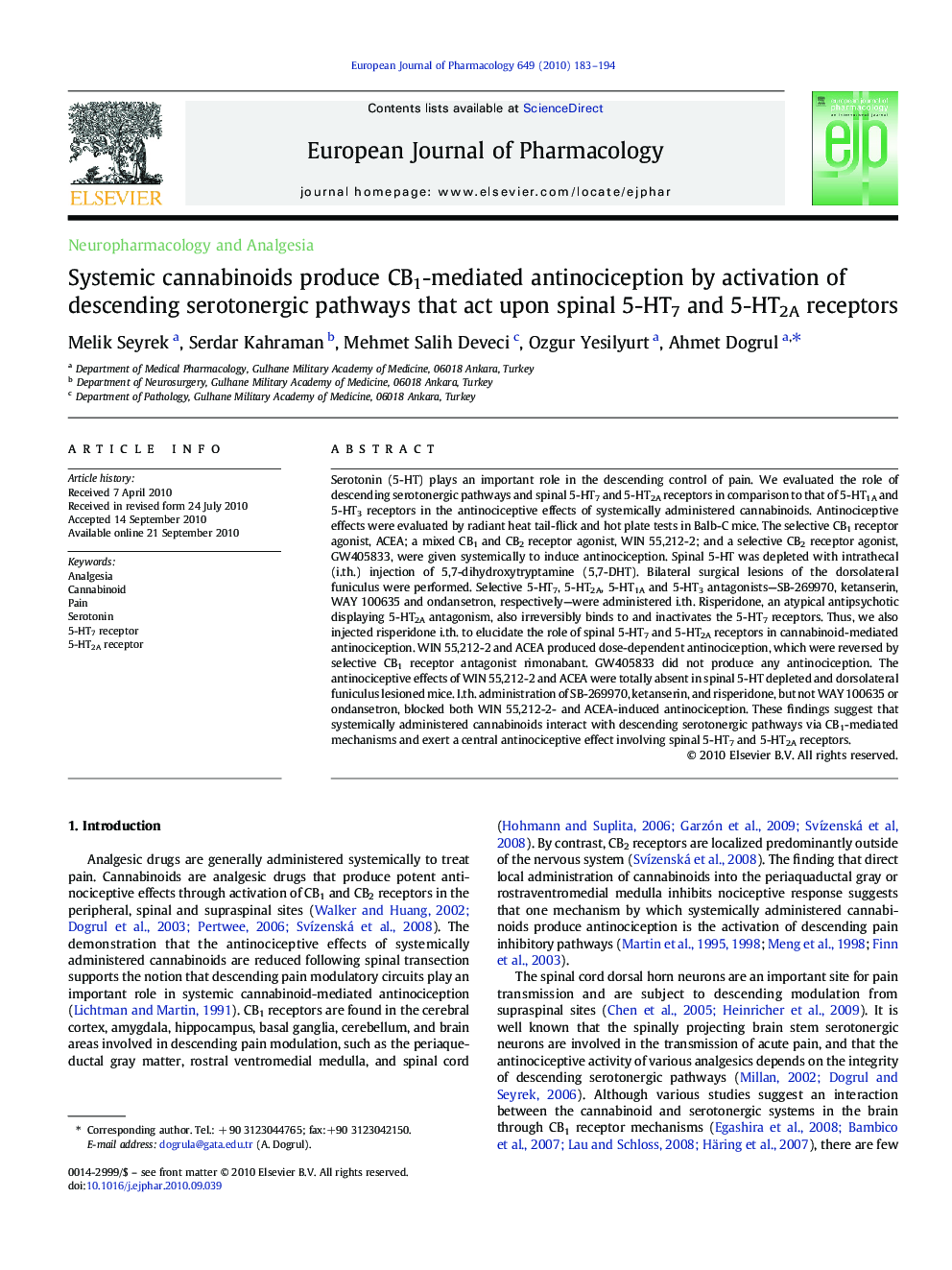| کد مقاله | کد نشریه | سال انتشار | مقاله انگلیسی | نسخه تمام متن |
|---|---|---|---|---|
| 2533147 | 1559042 | 2010 | 12 صفحه PDF | دانلود رایگان |

Serotonin (5-HT) plays an important role in the descending control of pain. We evaluated the role of descending serotonergic pathways and spinal 5-HT7 and 5-HT2A receptors in comparison to that of 5-HT1A and 5-HT3 receptors in the antinociceptive effects of systemically administered cannabinoids. Antinociceptive effects were evaluated by radiant heat tail-flick and hot plate tests in Balb-C mice. The selective CB1 receptor agonist, ACEA; a mixed CB1 and CB2 receptor agonist, WIN 55,212-2; and a selective CB2 receptor agonist, GW405833, were given systemically to induce antinociception. Spinal 5-HT was depleted with intrathecal (i.th.) injection of 5,7-dihydroxytryptamine (5,7-DHT). Bilateral surgical lesions of the dorsolateral funiculus were performed. Selective 5-HT7, 5-HT2A, 5-HT1A and 5-HT3 antagonists—SB-269970, ketanserin, WAY 100635 and ondansetron, respectively—were administered i.th. Risperidone, an atypical antipsychotic displaying 5-HT2A antagonism, also irreversibly binds to and inactivates the 5-HT7 receptors. Thus, we also injected risperidone i.th. to elucidate the role of spinal 5-HT7 and 5-HT2A receptors in cannabinoid-mediated antinociception. WIN 55,212-2 and ACEA produced dose-dependent antinociception, which were reversed by selective CB1 receptor antagonist rimonabant. GW405833 did not produce any antinociception. The antinociceptive effects of WIN 55,212-2 and ACEA were totally absent in spinal 5-HT depleted and dorsolateral funiculus lesioned mice. I.th. administration of SB-269970, ketanserin, and risperidone, but not WAY 100635 or ondansetron, blocked both WIN 55,212-2- and ACEA-induced antinociception. These findings suggest that systemically administered cannabinoids interact with descending serotonergic pathways via CB1-mediated mechanisms and exert a central antinociceptive effect involving spinal 5-HT7 and 5-HT2A receptors.
Journal: European Journal of Pharmacology - Volume 649, Issues 1–3, 15 December 2010, Pages 183–194